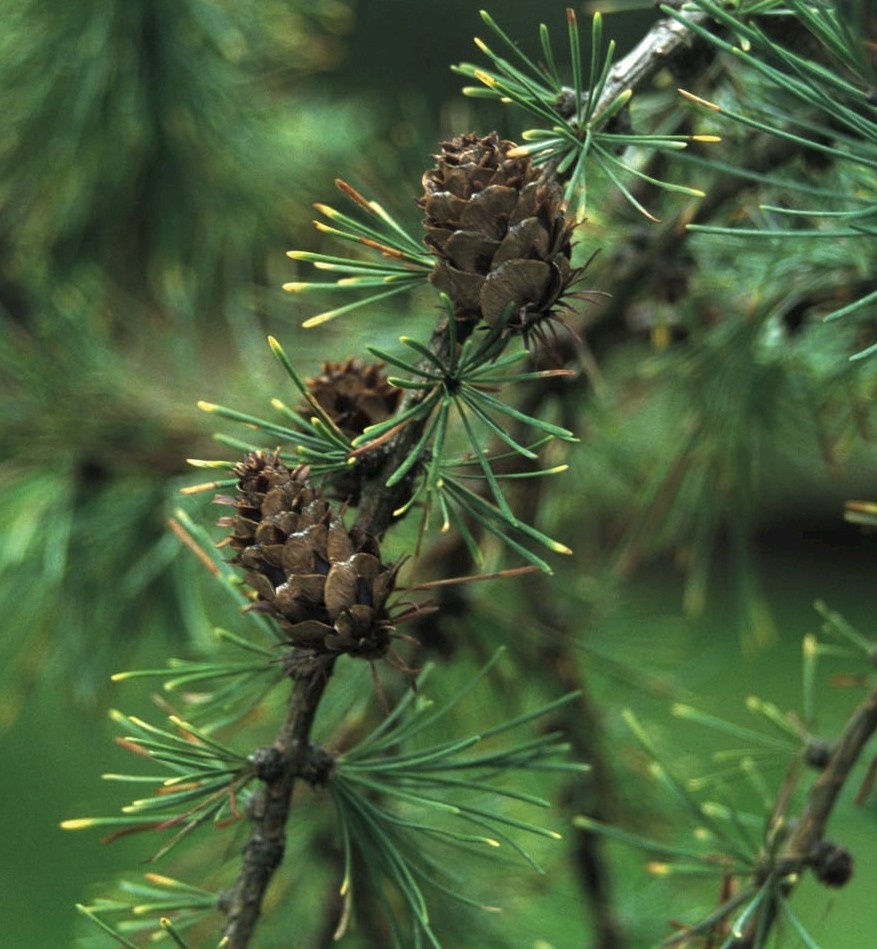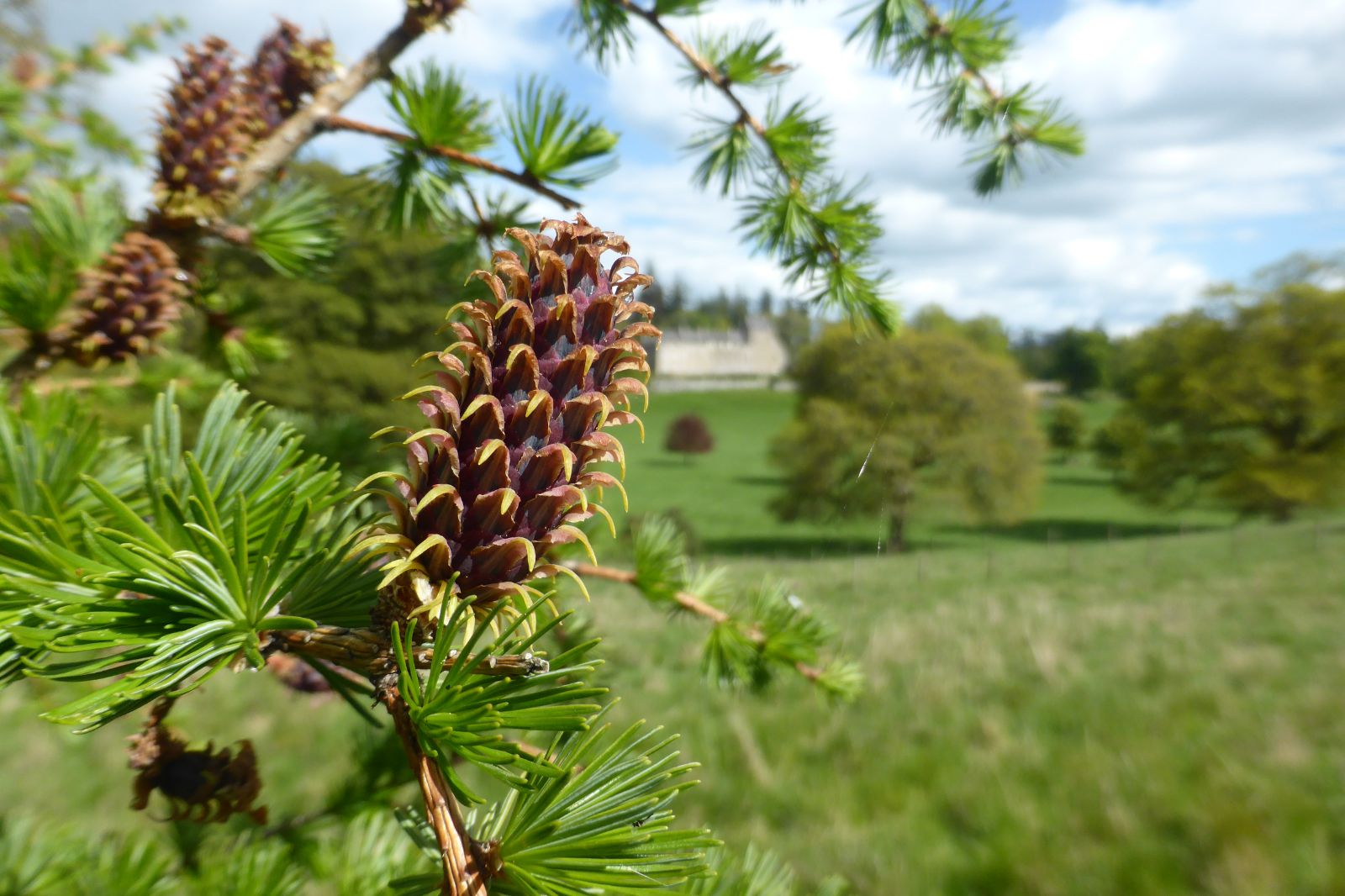Larix himalaica
Sponsor
Kindly sponsored by
This genus has been sponsored and new text is being prepared.
Credits
Article from New Trees by John Grimshaw & Ross Bayton
Recommended citation
'Larix himalaica' from the website Trees and Shrubs Online (treesandshrubsonline.
Genus
Common Names
- Langtang Larch
Tree to 40 m, 0.8 m dbh. Bark smooth, becoming fissured in older trees. Branchlets slender, pendulous, yellowish or reddish brown, becoming grey with age, glabrous, grooved; short shoots cylindrical, 0.2–0.5 cm diameter; vegetative buds resinous. Leaves bright green, turning yellow in autumn, 1–2.5 × 0.1 cm, narrow to linear, keeled on lower surface and at the base on the upper surface; 20–40 leaves per short shoot. Female cones on short peduncles, ovoid-cylindrical, sometimes slightly curved, 2–6.5 × 2.8–3.2 cm, light green with yellow-orange bracts, turning light yellow-grey with darker bracts when mature. Seed scales 30–40, suborbicular to oblong-orbicular, 1.2–1.5 × 0.9–1.3 cm. Bract scales lanceolate-oblong, 1.4–1.7 cm long, apex obtuse, exserted and straight, not or only slightly longer than the seed scales. Seeds light brown, ovoid-cuneate, wings yellowish brown, obovate, 0.6–0.8 cm long. Farjon 1990, Fu et al. 1999c. Distribution CHINA: south-central Xizang; NEPAL: Bagmati Zone. Habitat High mountains between 3000 and 3500 m asl. USDA Hardiness Zone 7. Conservation status Vulnerable. Illustration Farjon 1990, Fu et al. 1999c; NT436. Cross-reference S302. Taxonomic note Larix himalaica is sometimes treated as a distinct species (Farjon 1990, Fu et al. 1999c) and sometimes as a variety of L. potaninii (Mill 1999, Farjon 2001). There are, however, sufficient grounds for it to be treated as a separate species. It is disjunct from populations of L. potaninii by over 1,000 km, with the range of L. griffithii sandwiched between them. Its placement as a variety of L. potaninii relies heavily on its straight vs. reflexed bract scales (a character which in the Sino-Himalayan larches appears to be correlated with monsoon intensity, with straight bracts in drier areas and reflexed bracts in areas of high rainfall), while neglecting other characters and comparisons (notably the shorter bracts and the pale yellow-brown shoots and mature cones of L. himalaica, unlike the longer bracts and red-brown shoots and dark purple-brown cones of both L. griffithii and L. potaninii) (M. Frankis, pers. comm. 2008).
Larix himalaica was collected several times during the period when Nepal was a regular destination for plant hunters in the 1970s and early 1980s. One gathering was made by Adam Stainton in the Langtang Valley in 1971 (Clarke 1988), and there were coning trees from this source at Wakehurst Place, up to 2 m tall in the mid-1980s, although these died prior to 1993 (Kew database); another was made by Ron McBeath in 1990 (McBeath 2240). The Langtang is the locus classicus for the species but it is also found in the valleys on the northern side of Mount Everest. A 2001 collection by the Edinburgh Nepal Expedition (ENEP 425) has resulted in a good number of seedlings that were planted out in the Scottish botanical gardens in 2007 (M. Gardner, pers. comm. 2008). Keith Rushforth (pers. comm. 2007) has tried it on several occasions but has not been able to get seedlings through the first year.


